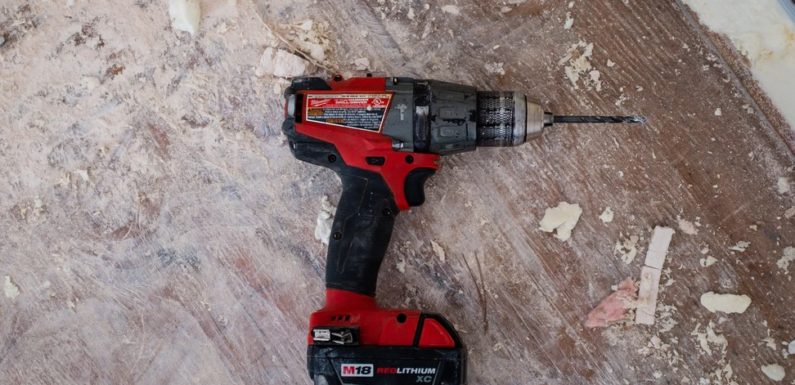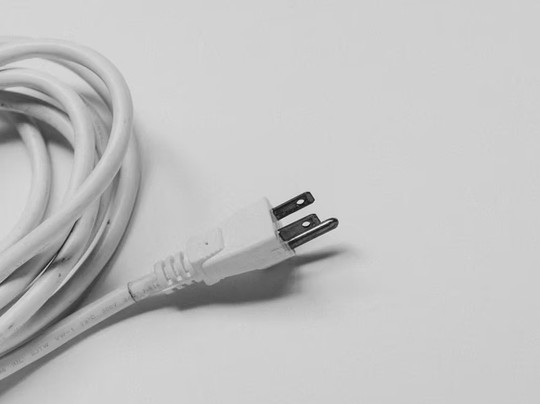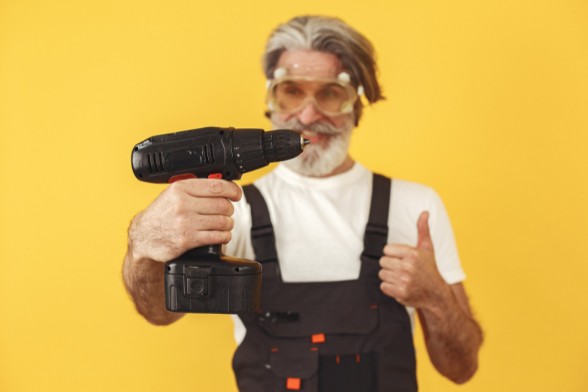
Power tools are motor-operated devices that you can use professionally or at home for building and repairs. Their functions can include cutting, grinding, drilling, sanding, and more. You may favor power tools over hand tools because power tools can do a lot of work in a short time and require less manpower.
But not all power tools are alike. Some come in handy every day, whereas others are needed only once or twice a year. Before buying or using any tool, you should know:
- The functions it serves
- The specific features to look for when buying or renting
- The right—and safe—ways to use it
Table of Contents
How to Buy Power Tools
Below are a few crucial guidelines for buying power tools:
- Know the kind of tool-user you are: Do you plan to tackle a lot of home improvement projects around the house? If so, a professional-quality tool is best for you—it will work better, last longer, and be safer and more enjoyable to use.
- Know the features that constitute a good tool: A good tool should:
- Feel comfortable and well-balanced in your hand
- Have more features than lower-cost alternatives
- If required, have guards—safety mechanisms—that work logically and are easy to use
- Have higher amp ratings than less expensive tools of the same type
- Have ball and roller bearings instead of sleeve bearings
- Feature a long cord (at least 8′ long) made of a flexible material, such as rubber or neoprene
- Have a longer warranty than those of comparable, less expensive tools
- Have a local service center (or an easy-to-use mail-away program) that can repair the tool quickly
- Get recommendations from contractors you know: Most contractors shop for quality rather than price, since their biggest expense is the cost of labor, not the cost of their tools. Low-quality tools break easily, slowing down the work.
- Ask about the retailer’s exchange policy: Make sure the retail outlet where you buy the tool will replace any faulty product instead of insisting that you send it back to the manufacturer.
- Shop locally: It’s important to be able to pick up the tool and feel it in your hand. If you’re investing more than $100 in a circular saw, for example, you want to be sure you like it more than other saws in its category.
- Shop online if you can’t find what you want locally: A quick internet search for “woodworking catalogs” yields hundreds of links that cover most of the tools shown in this guide—and many more.
- Decide whether you want a corded or cordless tool: Corded units are usually more powerful, almost always cheaper, and have no batteries that you need to keep charged. But cordless units can’t be beat when it comes to convenience.
Power Tool Safety
You can get seriously hurt using even just a chisel, so it’s not surprising that you can get very seriously hurt using heavy-duty power tools. Some general cautions apply. In particular, never use power tools:
- If you’re tired
- If you’ve been drinking alcohol
- If you’re using certain prescription drugs
- If the tool is damaged
- If the tool’s guards aren’t working
- In low-light or no-light conditions
- In poor-footing conditions
- For jobs that are not specified as appropriate in the owner’s manual
Besides the aforementioned precautions, make use of these personal protection supplies:
- Hearing protection: Your options include full-sized, rigid earmuffs (shown here), lightweight earplugs attached to a plastic frame, and disposable earplugs that are compressed and then pushed into your ear where they expand to fill the opening. Earmuffs block the most sound.
- Eye protection: In ascending order of effectiveness, your eye protection options are safety glasses, goggles, and a full-face shield (shown here).
- Breathing protection: Many people use paper dust masks for every job. But these protect only against dust—and sometimes not that well. For effective lung protection, a respirator (shown here) is the best choice because it has different replacement cartridges that are designed to block everything from dust to toxic vapors. Choose one that’s approved by the Occupational Safety and Health Administration (OSHA).
- Anti-fatigue mats: If you’ll be spending lot of time working in one place, put an anti-fatigue mat on the floor where you’ll be standing. These mats protect your feet and joints from the stress and discomfort that result from standing in one spot for too long.
- Fire extinguisher: If you plan to do a lot of work in the garage or basement, install a fire extinguisher in an accessible spot in each room. Get one with an ABC rating, which refers to the types of fires that it’s equipped to handle, and make sure it’s maintained according to the manufacturer’s instructions. Also, install a smoke detector in both the garage and the basement.
- First aid kit: Your household probably already has some basic first aid products, such as bandages and hydrogen peroxide. But a first aid kit includes much more, including eye wash, burn ointment, sterile gauze, and full-strength iodine—all in one place for quick access.
Extension Cords

It’s hard to use a power tool without an extension cord, which carries electricity from a standard household electrical receptacle to the tool. Buy two cords—one 25’ long and one 50’ long, both made of 3-wire, 12-gauge cable. Vinyl insulation makes for a stiff cord; rubber cords and neoprene cords are much better if you can find them.
Cordless Tools

Cordless technology improves every year, with new battery designs that perform better and with more efficient tools that require less power to do the same job. Battery recharge times also have shortened considerably.
Performance
Although manufacturers can put a battery in just about any electric tool, most cordless tools (with the exception of cordless drills) simply can’t compete with corded models in terms of power and performance.
If convenience is your biggest consideration by far, then look at cordless models. Otherwise, buy a high-quality corded tool.
Non–Battery-Powered Cordless Tools
Some tools are cordless but not battery-powered. The nails in the framing nail gun shown here, for instance, are driven by gas exploding in a combustion chamber.
The battery simply ignites the gas, much like a spark plug in a car engine. This tool eliminates the need for the compressor and air hoses that normal air-powered nail guns require, so it’s much more convenient.
Large Cordless Tools
Cordless tools aren’t necessarily small and handheld. For instance, cordless walk-behind lawn mowers (shown here) with rechargeable batteries are also available. When the battery runs down, the lawn mower is plugged into a standard household receptacle to recharge.
This is a big improvement over electric mowers, which are always tethered to an extension cord. But be sure to check the run time of a cordless mower before buying. If it won’t mow your whole lawn on a single charge, it’s a bad choice.

